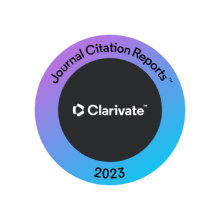Abstract
Background: Spontaneous reperfusion (SR) occurring before primary percutaneous coronary intervention (PPCI) can offer additional clinical benefits to patients with ST-segment elevation myocardial infarction (STEMI). The Platelet-to-White Blood Cell Ratio (PWR) has been recognized as a prognostic indicator in various diseases. We aimed to explore the relationship between PWR and SR in patients with STEMI undergoing PPCI.
Methods: We conducted a retrospective analysis involving 995 patients diagnosed with STEMI who underwent PPCI in a single-center setting. Demographic, clinical, laboratory, and angiographic data were extracted from the hospital database, and PWR was calculated by dividing serum platelet levels by white blood cell levels.
Results:Angiographic SR was observed in 203 patients (20.4%). The SR group displayed elevated PWR values (24.4±8.9 vs. 21.6±7.6, p
Conclusions: Patients with high PWR at presentation may experience higher rates of SR, fewer complications, and a more favorable prognosis in the context of STEMI.
Recommended Citation
Alıcı, Gökhan; Erdoğdu, Tayfur; Yıldırım, Arafat; Abacıoğlu, Özge Özcan; Genç, Ömer; Yücel, Ceyhun; Urgun, Örsan Deniz; Yıldırım, Abdullah; and Demir, Şerafettin
(2024)
"Platelet-to-White Blood Cell Ratio (PWR) : A Novel Prognostic Biomarker for Spontaneous Reperfusion after Primary Percutaneous Coronary Intervention.,"
Journal of the Saudi Heart Association: Vol. 36
:
Iss.
4
, Article 8.
Available at: https://doi.org/10.37616/2212-5043.1404
Creative Commons License

This work is licensed under a Creative Commons Attribution-Noncommercial-No Derivative Works 4.0 License.




